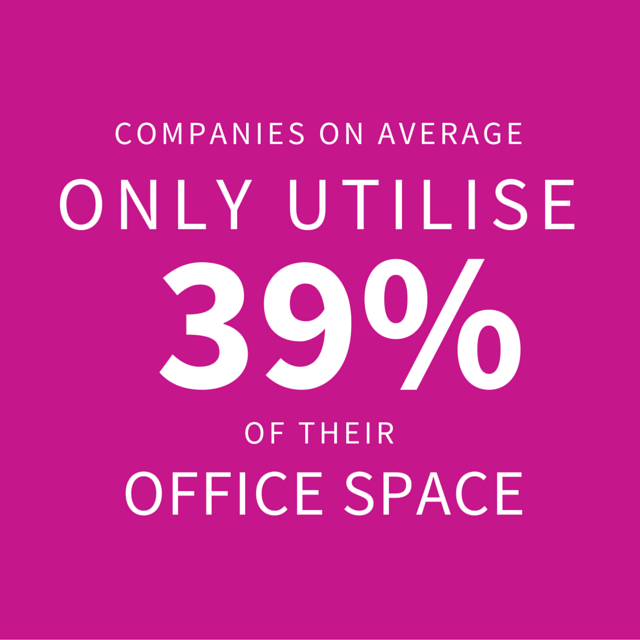With the recent news that London has been pushed off the list of top ten European cities in terms of property investment prospects, it’s clear that businesses face real risk when expanding their office space.[1] This comes hard on the heels of the report last week naming London as the most expensive European city – and the second most expensive in the world – in which to build.[2]
Vacancy rates in London are  dropping as demand surges, with the vacancy rate in the West End falling to a 26-year low.[3] However, our research has found that companies are, on average, only utilising 39 per cent of their office space – meaning that some firms may be making the decision to move to bigger premises when in fact they aren’t making the most of their existing real estate.
dropping as demand surges, with the vacancy rate in the West End falling to a 26-year low.[3] However, our research has found that companies are, on average, only utilising 39 per cent of their office space – meaning that some firms may be making the decision to move to bigger premises when in fact they aren’t making the most of their existing real estate.
Manual walk-through studies and qualitative research methods such as occupancy surveys are one of the ways in which businesses currently analyse how space is being used. On their own, these surveys are effective, but it is increasingly possible to support this single data set with multiple angles on the issue. Workplace technology, such as sensors, provides a harder set of data which can help companies to gain a fuller picture of their office utilisation.
 We have been working in collaboration with Future of Work specialists Unwork in order to provide this complete picture. Our sensor technology, Condeco Sense, provides accurate real-time occupancy data. When amalgamated with the traditional method of occupancy surveys, these combined qualitative and quantitative measurements enable businesses to make informed decisions about their office space.
We have been working in collaboration with Future of Work specialists Unwork in order to provide this complete picture. Our sensor technology, Condeco Sense, provides accurate real-time occupancy data. When amalgamated with the traditional method of occupancy surveys, these combined qualitative and quantitative measurements enable businesses to make informed decisions about their office space.
Companies who utilise the expertise of the surveyors along with the technology at their disposal can begin to produce effective strategies based on up-to-date data, and pinpoint what needs tweaking, in order to yield cost-effective results. This is essentially the future of workspace management and companies need to hop on board or risk not reaping in the benefits. Not only does it make for better efficiency in the office but allows companies to arrange their space to make collaboration easier, thus boosting productivity.
Sources
[1] http://www.telegraph.co.uk/finance/property/news/12095844/London-drops-from-list-of-top-10-best-places-to-invest-in-property-in-Europe.html
[2] http://www.building.co.uk/london-most-expensive-place-in-europe-to-build/5079480.article
[3] http://www.worldpropertyjournal.com/real-estate-news/united-kingdom/london-real-estate-news/london-commercial-market-predictions-for-2016-knight-frank-james-roberts-london-property-market-predictions-2016-eurozone-property-market-trends-2016-9575.php